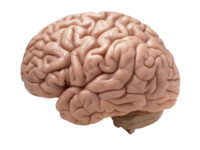When it comes to our memories, the expression “hindsight is 20/20” isn’t exactly accurate. We’ve all experienced a time when we remembered something wrong, even if we haven’t realized it. In reality, there is a scientific reasoning behind misremembering events. Furthermore, the misinformation effect also acts at a group level, playing an important role in what we call the Mandela effect.
When there are gaps in our memory, we tend to fill those gaps using the information we learn after the fact, or information from other sources. This information melds with our personal experiences and can create false memories of something that did not actually occur. Reconstruction of memory occurs because our memories are malleable and can be influenced by external factors, such as social interactions and external information; this is called the misinformation effect. A prime example of the misinformation effect is errors in eye-witness testimony, which is one of the leading causes of wrongful convictions. In fact, the American Psychological Association postulates that one in three eyewitnesses makes an incorrect identification, an exhibition of the misinformation effect in action.
Reconstruction of memory occurs because our memories are malleable and can be influenced by external factors, such as social interactions and external information; this is called the misinformation effect.
In addition, memories of events can be altered not only at an individual level but also at a group level. Collective memories are memories of events that are widely shared by individuals in the community. Since the collective memory of an event is reshaped by many different people and sources of information, a community’s collective memory of an event can differ from reality. A community’s collective memory can also tie people together and shape the group’s current identity. One example of differences in collective memory is different countries potentially remembering World War II differently.
People within the same community interact with each other and converse about shared experiences, which can shape the memory of an event. In conversation, some details are included, and some details are left out. Subsequently, it is difficult for both the speaker and the listener to recall the details that were not mentioned in conversation. This phenomenon results in a “shared reality,” or a reshaped memory of the event that is similar for everyone in the community.
When this “shared reality” differs from the reality of an event, this is called the Mandela effect. Some have proposed that the Mandela effect is a result of alternate realities, causing different groups of people to remember the same event differently. However, this phenomenon can actually be explained by the misinformation effect applied at a group level.
A study by de Vito et al. in 2010 investigated the malleability of memories and how the collective memory of an event was reshaped by the community to differ from reality. In particular, this study looked at the Bologna Massacre, one of the deadliest terrorist attacks in Italian history in which a bomb exploded in the main railway station of Bologna, Italy. The previously working clock outside the station was damaged and stopped working at 10:25 CEST, symbolizing the time of the attack. This study aimed to investigate the recollection of the status of the clock before the attack — whether it was working or if it had always been set to 10:25. Most of the people who were interviewed misremembered the status of the clock before the attack and thought it was always set to 10:25. As de Vito et al. said, “individual memory distortions shared by a large group of people develop into collective false memories.” The stopped clock became a symbol of the massacre, which was perpetuated by the media. This symbol overwrote many individuals’ accurate memories of the clock working and resulted in the formation of a distorted collective memory.
Social interactions within the community and widely circulated media can affect a group’s collective memory, resulting in inaccuracies recalling a historical event.
In this situation, the misinformation effect acting on an individual level was perpetuated through social interactions and conversation about people’s shared experiences. This culminated in an error in the community’s collective memory. Rather than two communities experiencing alternate versions of the same event, malleable memories caused the misremembering of the event everyone experienced.
Looking back on events that were experienced by the whole community, one may find that their memory of that event may not be entirely accurate. Social interactions within the community and widely circulated media can affect a group’s collective memory, resulting in inaccuracies recalling a historical event. The misinformation effect and the malleability of our memories allow us to reshape our own memories and experiences based on external influences.
Journal of the Experimental Analysis of Behavior (2011). DOI: 10.1901/jeab.2011.96-343
Frontiers in Psychology (2012). DOI: 10.3389/fpsyg.2012.00257
Frontiers in Psychiatry (2014). DOI: 10.3389/fpsyt.2014.00102
Cortex (2012). DOI: 10.1016/j.cortex.2008.08.002
Image source: Pixabay.



